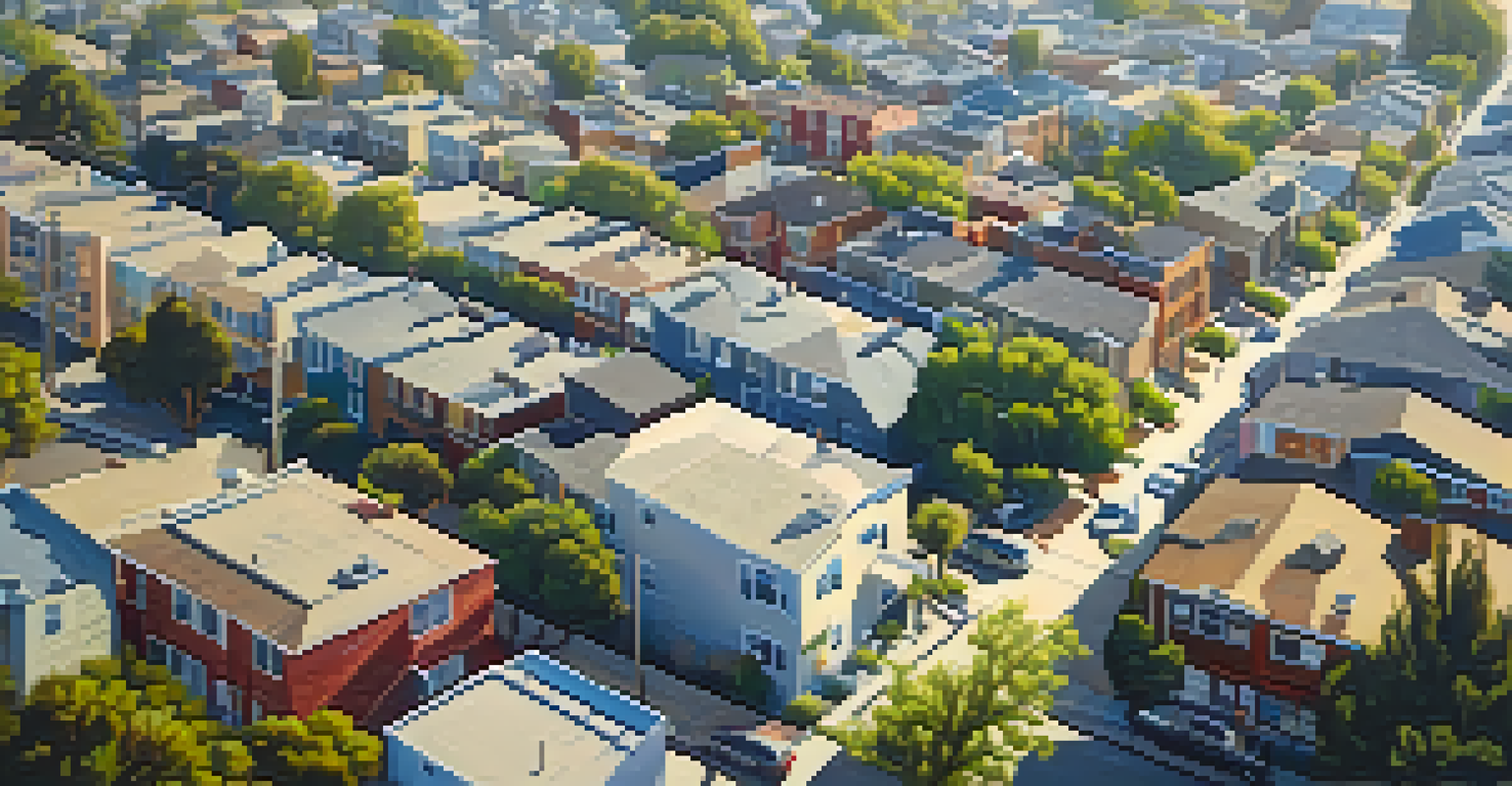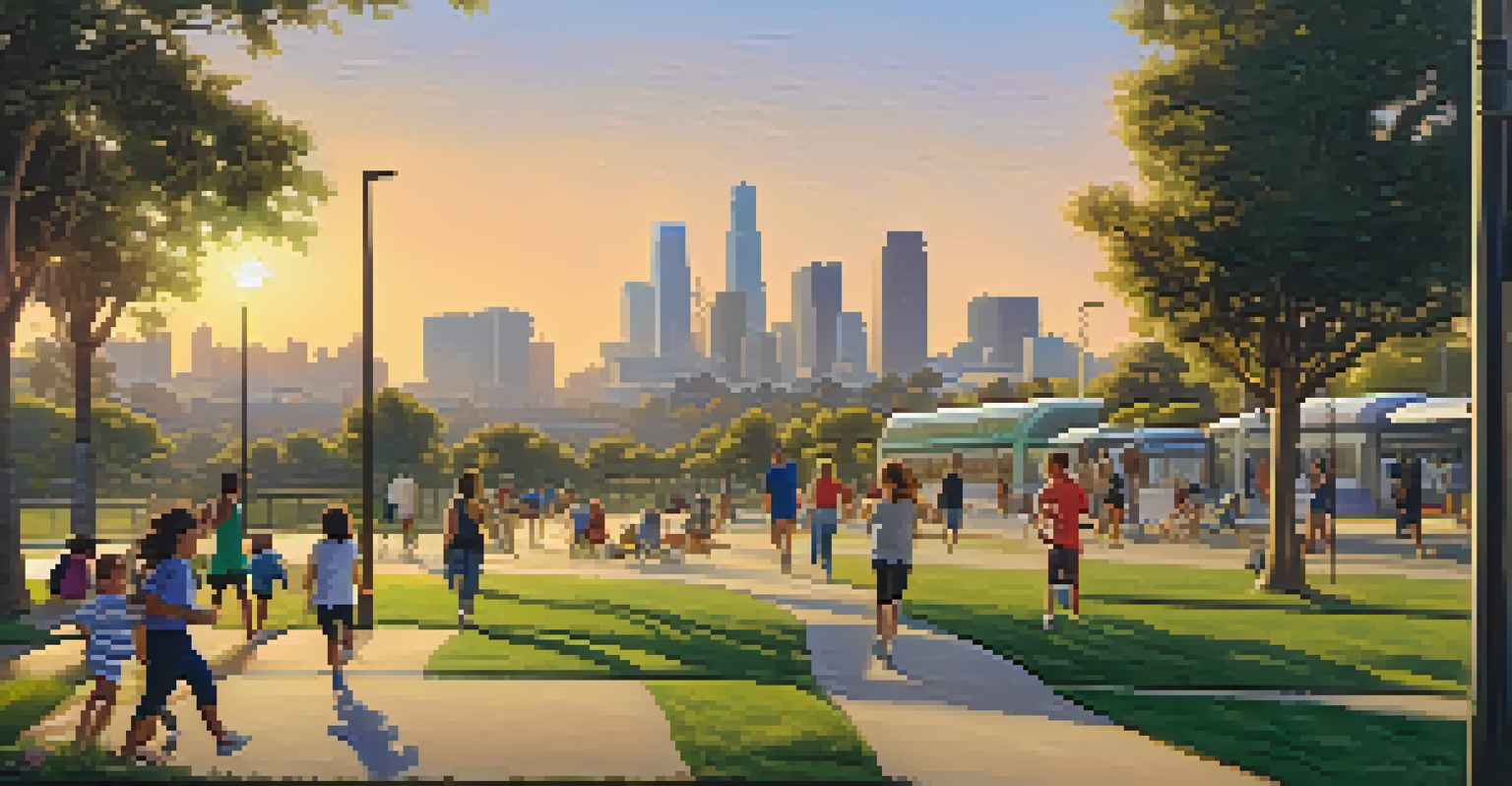Transportation Infrastructure's Role in LA Real Estate Trends

Understanding LA's Unique Transportation Landscape
Los Angeles is famous for its sprawling layout and car culture. With an extensive network of freeways and highways, the city has been designed around automobile travel. This means that neighborhoods are often defined by their accessibility to these major roadways, influencing where people choose to live.
Public transport is a lifeline for cities, connecting people to opportunities and reducing the burden on our environment.
However, in recent years, there has been a push for more public transportation options, such as the Metro Rail system and bus lines. This shift reflects a growing desire for alternative commuting methods, especially among younger residents who prioritize convenience and sustainability. As these systems expand, we can expect to see changes in the real estate landscape.
Understanding the unique transportation infrastructure in LA is crucial for investors and homebuyers alike. Areas with easy access to public transit are becoming increasingly desirable, driving demand and prices upwards in those neighborhoods.
The Connection Between Transit and Property Values
Research shows that homes located near public transportation tend to have higher property values. This is because proximity to transit options often means easier commutes, higher quality of life, and access to more urban amenities. As a result, properties near subway stations or bus stops can command a premium, attracting both buyers and renters.

For example, neighborhoods like Downtown LA and Koreatown have seen significant appreciation in property values, largely due to their proximity to transit lines. Investors recognize this trend and are increasingly looking to purchase properties in these areas, anticipating continued growth.
Transit Access Boosts Property Values
Homes near public transportation options often see higher property values due to increased convenience and access to urban amenities.
As transit infrastructure continues to improve and expand in LA, it will likely have a lasting impact on property values. Buyers and investors should keep a keen eye on new transit developments to identify the next hot neighborhoods.
Gentrification and Transportation Upgrades
Transportation upgrades can often lead to gentrification, a process where wealthier individuals move into a lower-income neighborhood, raising property values and altering the community's character. In LA, this has been particularly evident in areas that have received significant transit investments, such as the Crenshaw Line.
The future of urban living lies in sustainable transportation options that not only ease congestion but also enhance the quality of life for residents.
While these upgrades can bring about improved local economies and amenities, they can also displace long-time residents who can no longer afford the rising costs. This creates a complex issue for city planners and policymakers who must balance development with community needs.
Understanding the implications of gentrification is essential for anyone involved in the LA real estate market. Stakeholders should consider both the benefits of transportation developments and their potential impacts on existing communities.
The Role of Technology in Transportation Planning
Technology plays a vital role in modern transportation planning, particularly in a city like LA where traffic congestion is a constant issue. Innovations such as ride-sharing apps and smart traffic management systems are helping to ease some of these challenges. As these technologies evolve, they will likely influence real estate trends as well.
For instance, neighborhoods that are more integrated with technology may become more attractive to tech-savvy residents. Features like real-time transit updates and better navigation options can enhance the overall commuting experience, making certain areas more desirable.
Gentrification from Transportation Upgrades
Transportation improvements can lead to gentrification, altering community dynamics as wealthier individuals move into formerly lower-income neighborhoods.
As technology continues to shape how we navigate the city, it will also affect where people choose to live. Real estate professionals must stay informed about these trends to better serve their clients.
Public Policy and Transportation Infrastructure
Public policy decisions significantly influence transportation infrastructure in Los Angeles. Investments in public transit can lead to new development projects and revitalized neighborhoods, which in turn impacts real estate trends. Policymakers must consider the long-term implications of their decisions on housing availability and affordability.
For instance, recent proposals to expand the Metro system aim to connect underserved areas of the city, potentially opening up new real estate opportunities. These initiatives can help create more equitable access to transportation, leading to a more balanced urban development.
As public policy continues to evolve, it will be essential to monitor how these changes affect real estate dynamics. Collaboration between city officials, developers, and community stakeholders is crucial for fostering sustainable growth.
Environmental Considerations in Transportation Planning
As Los Angeles grapples with environmental challenges, the transportation infrastructure plays a crucial role in promoting sustainable practices. Investments in public transit and bike lanes can reduce carbon emissions and alleviate traffic congestion, benefiting both the community and the environment. This shift towards sustainability is influencing real estate trends across the region.
Developers are increasingly incorporating eco-friendly features into their projects, recognizing that homebuyers are prioritizing sustainability. Properties that offer easy access to public transit or are located in walkable neighborhoods are becoming more attractive, driving demand.
Sustainability Shapes Real Estate Trends
As Los Angeles prioritizes eco-friendly practices, properties near public transit and walkable neighborhoods are becoming increasingly attractive to buyers.
As the city moves toward a greener future, real estate trends will likely reflect this focus on sustainability. Buyers and investors who prioritize environmentally friendly options will have more opportunities in the evolving market.
Future Trends in LA Real Estate and Transportation
Looking ahead, the intersection of transportation infrastructure and real estate trends in LA will continue to evolve. As new transit projects break ground and technology advances, we can expect shifts in where people choose to live and invest. Understanding these trends will be key for anyone involved in the LA real estate market.
Emerging neighborhoods that are currently underserved by public transit may experience revitalization as new lines are introduced. This presents unique opportunities for investors and developers to tap into these areas before they become saturated.

Staying attuned to changes in transportation infrastructure will be crucial for making informed decisions in the LA real estate landscape. By anticipating future developments, stakeholders can position themselves advantageously in this dynamic market.